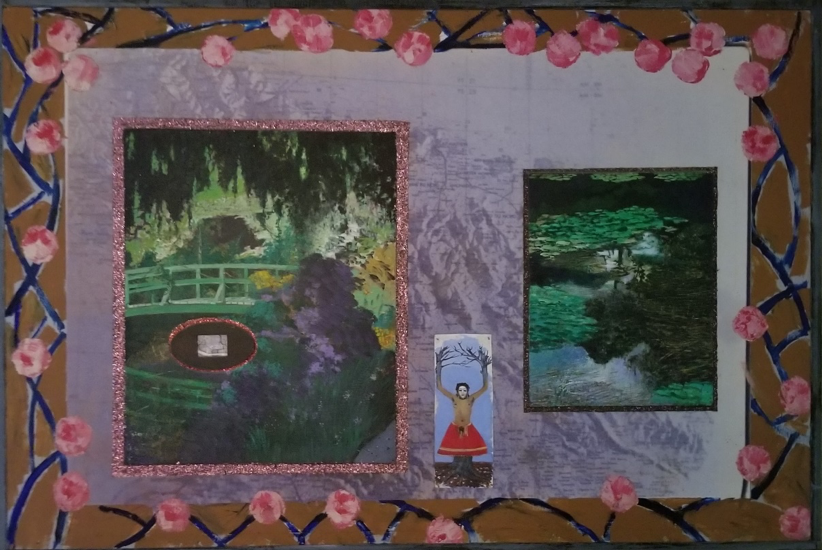My two-year-old granddaughter, Veronica, was sitting at my dining room table last week, having some strained pears and admiring Water Garden #1, a painting by the late Paul Gardere.

It’s a large, complicated piece by an artist who was also large and complicated. Paul was born in Haiti in 1944, part of the educated Creole elite who ran the nation and sent their children to be educated in France. Paul’s father died when Paul was a boy, though, and with the rise to power of Papa Doc Duvalier, it became dangerous to be part of what had been the ruling class. When Paul was 14, his mother brought him to the United States. Four years later, he won entrance to New York’s renowned Cooper Union Institute, whose alumni include George Segal, Alex Katz, Tom Wesselmann, and many others. He went on to get an MFA and become an established artist.
The memory of his homeland called to Paul, however, and several years later he took his wife and young son back to Haiti, where they lived for seven years and had a daughter. For the rest of his life, Haiti and the cult of Vodou would play a large part in Paul’s art. In Water Garden #1, we see the influence of Haiti in the totemic central figure, the use of glitter (which is found in Vodou flags and decorations), and the topography of the island, which is literally represented by the map that forms the gray background to the piece. But Paul also had a thorough education in European and American art history, and quotes from canonical artists often appear in his work. In this case, the two small paintings affixed to the larger painting’s surface are renderings of Monet’s famous gardens in Giverny, France. Paul knew the gardens intimately, for he had won a five-month residency there given by the Lila Acheson Wallace Foundation. It was great, Paul told me – he had his own key to the garden gate and could let himself in to paint early in the mornings before the carloads of tourists arrived.
But back to my granddaughter. She told her mother that she liked the glitter in Paul’s painting. When my daughter told me this, I answered, “Well, she can inherit the painting from you someday.” For my younger daughter has put her dibs on the painting, which brings me to the subject to which this blog’s title refers. You can’t take it with you. If you have more than one heir, discussions, even informal ones, can head off a lot of misunderstandings when you’re gone. You can make formal disposition of your collection in a will, but you can also just do what my parents did with the works of art they had acquired: they told each of their children put stickers on the back of works they knew they would want when the time came. If two people wanted the same piece, swapping and horse trading was the order of the day.
You may think, “I don’t have a collection. I just have some things that I bought here and there or that artists have given to me.” But you still have things that more than one of your heirs may want, and even if your heirs don’t want something, they may not be aware of the value of that particular piece. I’ve told my daughters, “See that vase there? It’s from Fulper Pottery. It’s worth a few hundred bucks. Don’t just put it in a yard sale if none of you wants it.” Records of what you paid for things may help your heirs decide about disposition. An appraisal for estate planning purposes is even better, and by coincidence, I can conduct one for you.
One final note for my artist friends: I’ve said it before, but I’ll say it again: there’s no excuse for you not to have the works you still have in your possession catalogued and photographed. There is software easily available to help construct such a database, and you know things about individual pieces that nobody else does. It will help your heirs so much.
I once saw a cartoon that I made me laugh: two angels are standing in Heaven, watching the Pearly Gates swing open. Driving through the gates is a man in a Cadillac convertible, sporting a grin and a big cigar. The back seat the of car is piled high with bags of gold, and seated atop the bags are a couple of gorgeous young ladies in bikinis. One angel says to the other, “Fool that I was, I simply assumed you can’t take it with you.” A funny caption, but, funny only because it’s not true. Spare your loved ones a lot of headaches, and make some plans.

